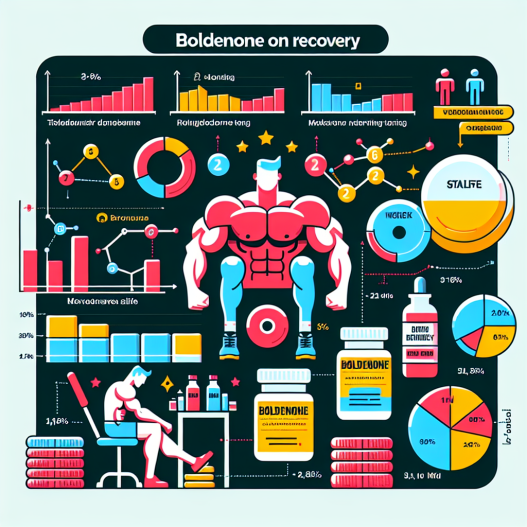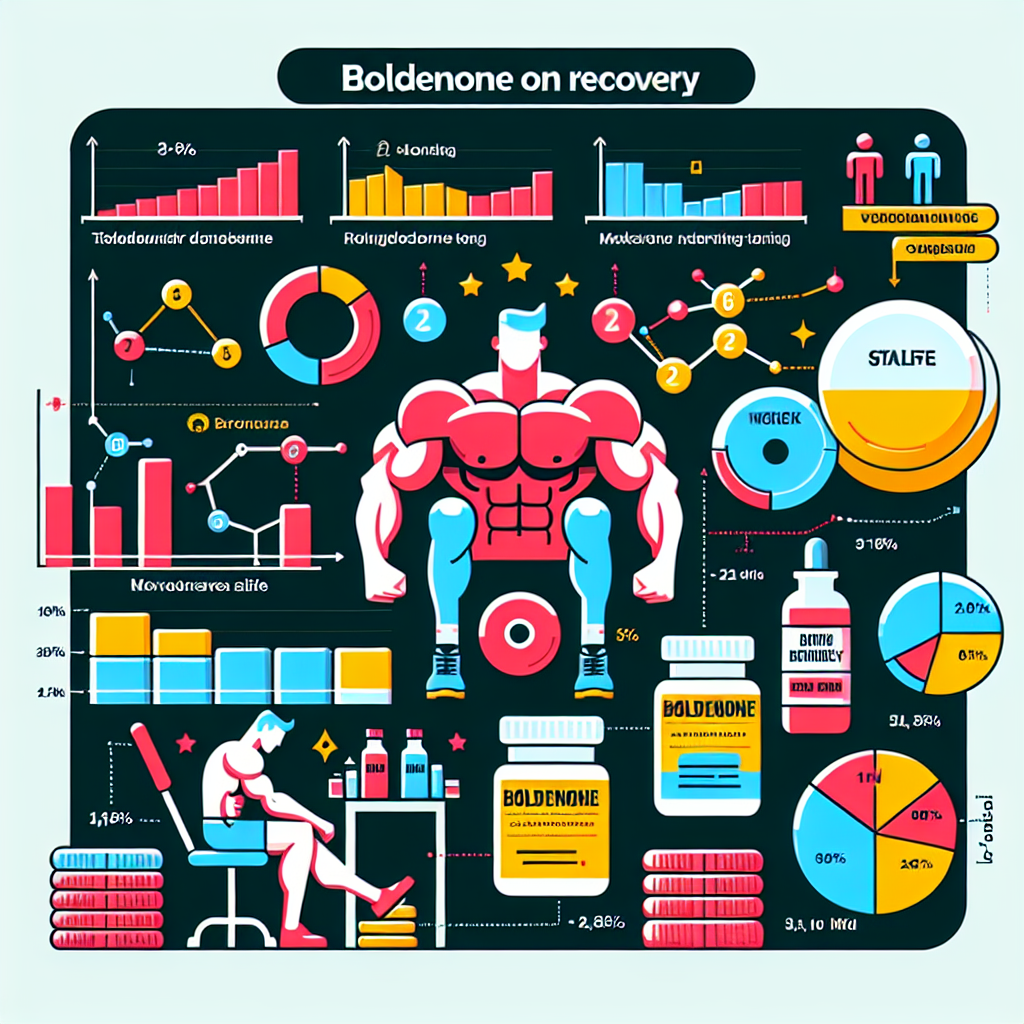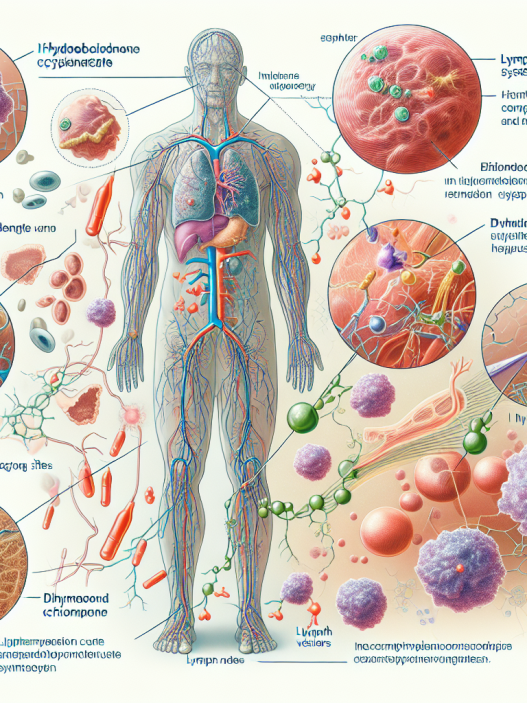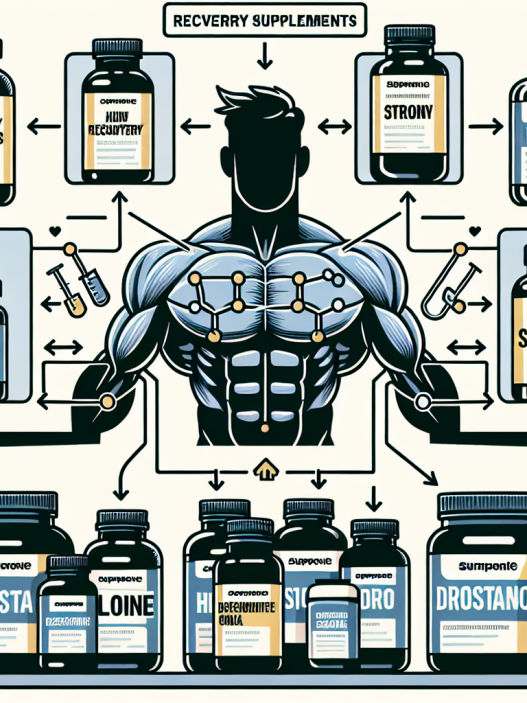-
Table of Contents
«Maximiza tu rendimiento con Boldenona: la clave para una recuperación más rápida entre sesiones.»
Introduction
Boldenona es un esteroide anabólico que se utiliza comúnmente en el mundo del culturismo y el deporte para aumentar la masa muscular y mejorar el rendimiento físico. Una pregunta frecuente sobre este compuesto es si modifica el tiempo de recuperación entre sesiones de entrenamiento. En esta respuesta, exploraremos cómo la boldenona puede afectar el tiempo de recuperación y qué factores deben tenerse en cuenta al usar este esteroide.
The Effects of Boldenone on Recovery Time Between Training Sessions
Boldenone, also known as Equipoise, is a popular anabolic steroid that is commonly used by bodybuilders and athletes to enhance their performance and physical appearance. It is known for its ability to increase muscle mass, strength, and endurance. However, one aspect that is often overlooked is its impact on recovery time between training sessions.
Recovery time is crucial for athletes and bodybuilders as it allows their muscles to repair and grow after intense training sessions. Without proper recovery, the risk of injury and overtraining increases, which can hinder progress and performance. Therefore, it is essential to understand how Boldenone affects recovery time and whether it can be beneficial or detrimental.
Firstly, it is important to note that Boldenone is a slow-acting steroid, meaning it takes longer to see its effects compared to other steroids. This is due to its long ester, which slows down its release into the body. As a result, it may take several weeks for Boldenone to reach its peak levels in the body. This slow-acting nature also applies to its impact on recovery time.
Studies have shown that Boldenone can increase the production of red blood cells, which are responsible for carrying oxygen to the muscles. This increase in oxygen delivery can improve endurance and reduce fatigue during training sessions. As a result, athletes may be able to train for longer periods without feeling as fatigued, leading to a shorter recovery time between sessions.
Moreover, Boldenone has been found to have anti-catabolic properties, meaning it can prevent the breakdown of muscle tissue. This is beneficial for recovery as it allows the muscles to repair and grow without being hindered by catabolic processes. Additionally, Boldenone has been shown to increase the production of collagen, which is essential for the repair of connective tissue. This can be beneficial for athletes who engage in high-impact activities that put stress on their joints and tendons.
On the other hand, some studies have also suggested that Boldenone may have a negative impact on recovery time. One study found that Boldenone can decrease the production of cortisol, a hormone that is released during times of stress and helps regulate the immune system. This decrease in cortisol levels can weaken the immune system, making athletes more susceptible to illness and infections. This can lead to longer recovery times as the body focuses on fighting off illnesses rather than repairing and growing muscles.
Furthermore, Boldenone has been shown to increase the production of estrogen, a hormone that can cause water retention and bloating. This can lead to joint pain and discomfort, which can hinder recovery time. Additionally, estrogen can also increase the risk of gynecomastia, a condition where male breast tissue grows, which can be a source of discomfort and may require surgery to correct.
In conclusion, the effects of Boldenone on recovery time between training sessions are not entirely clear. While it may have some benefits, such as increasing oxygen delivery and preventing muscle breakdown, it may also have negative impacts, such as weakening the immune system and causing joint pain. Therefore, it is essential for athletes and bodybuilders to carefully consider the potential risks and benefits before using Boldenone. It is also crucial to follow proper dosage and cycle protocols to minimize any potential negative effects on recovery time. As with any performance-enhancing substance, it is always recommended to consult a healthcare professional before use.
Maximizing Recovery with Boldenone: How to Optimize Your Training Schedule
Boldenone, also known as Equipoise, is a popular anabolic steroid that is commonly used by bodybuilders and athletes to enhance their performance and physique. It is known for its ability to increase muscle mass, strength, and endurance. However, one aspect of Boldenone that is often overlooked is its impact on recovery time between training sessions.
Recovery is a crucial aspect of any training program, as it allows the body to repair and rebuild muscles that have been broken down during exercise. Without proper recovery, the body can become fatigued and overworked, leading to decreased performance and an increased risk of injury. This is where Boldenone comes into play.
Studies have shown that Boldenone can significantly reduce the time needed for recovery between training sessions. This is due to its ability to increase the production of red blood cells, which are responsible for carrying oxygen and nutrients to the muscles. With an increased supply of oxygen and nutrients, the muscles are able to recover faster and more efficiently.
In addition to its effects on red blood cell production, Boldenone also has anti-inflammatory properties. This means that it can reduce inflammation in the muscles, which is a common side effect of intense training. By reducing inflammation, Boldenone can help alleviate muscle soreness and stiffness, allowing athletes to train more frequently and with less discomfort.
Another way that Boldenone can modify recovery time is by increasing the production of collagen. Collagen is a protein that is essential for the repair and growth of connective tissues, such as tendons and ligaments. By increasing collagen production, Boldenone can help strengthen these tissues, making them less prone to injury. This is especially beneficial for athletes who engage in high-impact activities that put a lot of stress on their joints.
It is important to note that while Boldenone can speed up recovery time, it is not a magic solution. Proper rest and nutrition are still essential for optimal recovery. Boldenone should be used in conjunction with a well-rounded training program and a balanced diet to achieve the best results.
When it comes to optimizing your training schedule with Boldenone, there are a few things to keep in mind. First and foremost, it is important to listen to your body. While Boldenone can help reduce recovery time, it is still important to give your body enough time to rest and recover. Pushing yourself too hard can lead to overtraining and hinder your progress.
It is also important to plan your training schedule strategically. Boldenone has a half-life of approximately 14 days, which means it stays in the body for a longer period compared to other steroids. This makes it ideal for longer training cycles, as it can provide sustained benefits over a longer period. However, it is important to cycle off Boldenone to give your body a break and prevent any potential side effects.
In addition to planning your training schedule, it is also important to pay attention to your dosage. The recommended dosage for Boldenone is between 200-400mg per week for men and 50-75mg per week for women. Taking more than the recommended dosage can increase the risk of side effects and may not provide any additional benefits.
In conclusion, Boldenone can modify recovery time between training sessions by increasing red blood cell production, reducing inflammation, and promoting collagen production. However, it should be used in conjunction with proper rest and nutrition, and should be cycled off to prevent any potential side effects. By incorporating Boldenone into your training program, you can optimize your recovery time and achieve your fitness goals more efficiently.
Boldenone and Muscle Recovery: Understanding the Science Behind its Impact on Training Frequency
Boldenone, also known as Equipoise, is a popular anabolic steroid used by bodybuilders and athletes to enhance muscle growth and performance. While its effects on muscle mass and strength are well-known, there is also a growing interest in its impact on muscle recovery and training frequency. Many people wonder if Boldenone can modify the time needed for muscles to recover between training sessions. In this article, we will delve into the science behind Boldenone and its potential effects on muscle recovery.
To understand how Boldenone may affect muscle recovery, we must first understand the process of muscle recovery itself. When we engage in physical activity, our muscles experience micro-tears, which is a normal part of the muscle-building process. These micro-tears signal the body to repair and rebuild the muscles, resulting in increased muscle mass and strength. However, this process requires time and proper nutrition to be effective.
One of the key factors in muscle recovery is protein synthesis. This is the process by which the body uses amino acids to repair and build new muscle tissue. Studies have shown that anabolic steroids like Boldenone can increase protein synthesis, leading to faster muscle recovery and growth. This is one of the reasons why Boldenone is popular among bodybuilders and athletes.
Another factor that affects muscle recovery is inflammation. When muscles are damaged, the body responds by sending inflammatory cells to the affected area. While inflammation is a natural response, excessive or prolonged inflammation can delay the healing process and lead to muscle soreness and fatigue. Boldenone has been shown to have anti-inflammatory properties, which may help reduce inflammation and speed up the recovery process.
Moreover, Boldenone has been found to increase the production of red blood cells. Red blood cells are responsible for carrying oxygen to the muscles, which is essential for energy production and muscle recovery. With an increase in red blood cells, muscles receive more oxygen, allowing them to recover faster and perform better during training sessions.
Aside from its direct effects on muscle recovery, Boldenone may also indirectly impact training frequency. As mentioned earlier, muscle recovery requires time and proper nutrition. With Boldenone’s ability to enhance protein synthesis and reduce inflammation, muscles may recover faster, allowing for more frequent training sessions. This can be beneficial for athletes and bodybuilders who want to increase their training volume and intensity.
However, it is important to note that Boldenone is a powerful anabolic steroid and should not be taken lightly. Like any other performance-enhancing drug, it comes with potential side effects, including liver damage, cardiovascular issues, and hormonal imbalances. Therefore, it is crucial to use Boldenone under the supervision of a medical professional and to follow proper dosage and cycling protocols.
In conclusion, while there is limited research on the direct effects of Boldenone on muscle recovery, its ability to increase protein synthesis, reduce inflammation, and improve oxygen delivery to muscles may indirectly impact training frequency. However, it is essential to use Boldenone responsibly and to prioritize proper nutrition and rest for optimal muscle recovery. As with any supplement or drug, it is crucial to consult with a medical professional before use and to prioritize overall health and safety.
Q&A
1. ¿Boldenona afecta el tiempo de recuperación entre sesiones de entrenamiento?
No hay evidencia científica que demuestre que la boldenona tenga un impacto directo en el tiempo de recuperación entre sesiones de entrenamiento. Sin embargo, al ser un esteroide anabólico, puede aumentar la síntesis de proteínas y mejorar la recuperación muscular en general.
2. ¿Puede la boldenona acelerar el tiempo de recuperación entre sesiones de entrenamiento?
No hay estudios que demuestren que la boldenona tenga un efecto directo en la aceleración del tiempo de recuperación entre sesiones de entrenamiento. Sin embargo, al mejorar la síntesis de proteínas y promover el crecimiento muscular, puede ayudar a reducir el tiempo de recuperación en general.
3. ¿Es seguro usar boldenona para mejorar el tiempo de recuperación entre sesiones de entrenamiento?
No se recomienda el uso de boldenona con el único propósito de mejorar el tiempo de recuperación entre sesiones de entrenamiento. Además, su uso puede tener efectos secundarios graves y debe ser supervisado por un médico. Es importante seguir una dieta adecuada y un plan de entrenamiento adecuado para mejorar el tiempo de recuperación de manera segura y efectiva.











